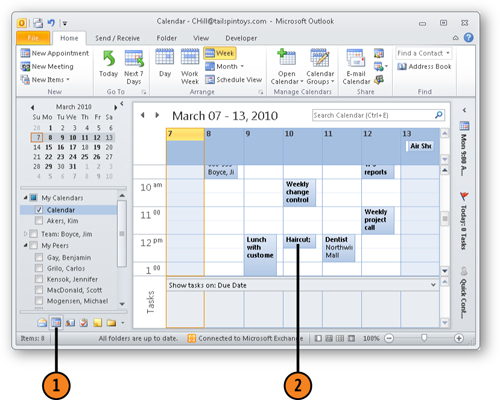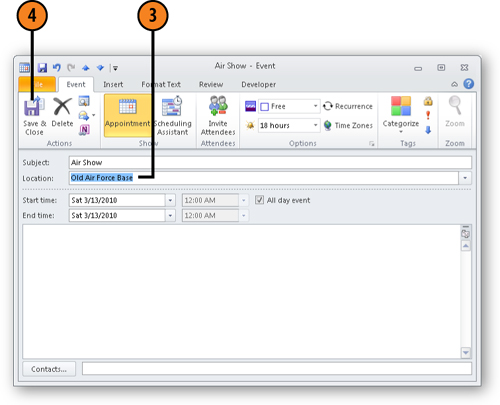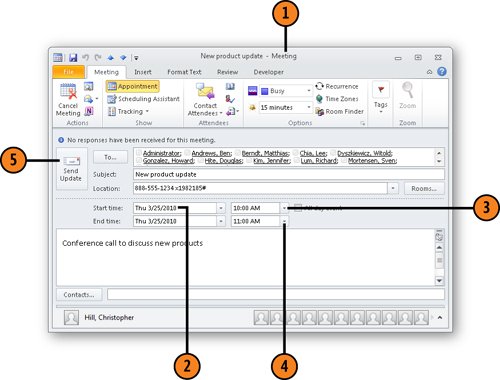Outlook lets you edit a meeting, appointment, or
event information saved in the Calendar folder. You might, for example,
need to modify the time an appointment starts or ends, change where a
meeting is held, or adjust the date of an event. When you change a
meeting, you can send new meeting messages to attendees to announce the
change.
1. Change an Appointment
Click the Calendar icon on the Navigation Pane.
Double-click
the appointment you want to change. (If you open a recurring
appointment, Outlook asks whether you want to change the occurrence or
the series.)

Make changes to the appointment.
Click the Save & Close button.

Note:
Any date that has a meeting,
appointment, or event appears in bold on the Date Navigator. Click that
date to switch to the day, week, or month in which that activity occurs.
Note:
Make an appointment
recurring by clicking the Recurrence button and filling out the
Appointment Recurrence information. For example, set the time for the
appointment to occur from 8:00 A.M. to 10:00 A.M. every Thursday.
2. Update Event Information
Click the Calendar icon on the Navigation Pane.
Double-click the event you want to change.

Make changes to the event.
Click the Save & Close button.

Note:
Events appear at the top of Day and Week views and are shown within a box in Month view.
Note:
If you deselect the All
Day Event option on the Appointment tab for the event, you may create a
conflict with appointments or meetings you’ve already set up for that
day. Remember that events run for 24 hours—from midnight to midnight.
8.5.3. Reschedule a Meeting
Open
the meeting you want to change. If it is a recurring meeting, specify
whether you want to change the occurrence or the series.
Change the start day, if needed.
Click the Start Time hour drop-down list, and select the new start time.
Click the End Time hour drop-down list, and select the new end time.
Click Send Update.

Note:
You can reschedule a meeting
simply by dragging it to a new location on the Calendar. Regardless of
the method you use to move the meeting, Outlook can automatically send
an update to all attendees with notice of the new day and time.
Note:
Use the Tracking button on the Meeting tab to see which attendees have responded to your meeting request.